Keren
Kashani
Zilpah
Kashi
Gal
Shilon
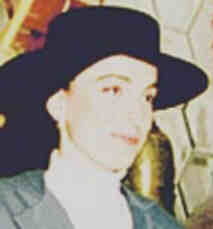
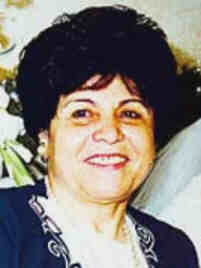
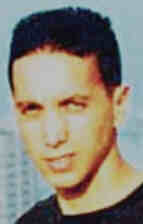
|
CURRENT UPDATES: TODAY–2
TO TODAY+2
|
|
<<
Jul 15| HISTORY “4” “2”DAY
|Jul 17 >>
Events, deaths, births, of JUL 16 [For Jul 16 Julian go to Gregorian date: 1583~1699: Jul 26 — 1700s: Jul 27 — 1800s: Jul 28 — 1900~2099: Jul 29] |
| On a 16 July:
2002 A.P.J. Abdul Kalam is elected India's (ceremonial) President by 4386 of the votes cast by 4896 members of the national Parliament and the state legislatures. Missile scientist Kalam advocates nuclear weapons as a war deterrent.
1996 US President Clinton told the National Governors Association he was granting states new powers to deny benefits to recipients who refuse to move from welfare to work. 1996 Russian President Boris Yeltsin met a day late with US Vice President Al Gore, easing some of the concerns about his fragile health.
1980 Ronald Reagan is nominated for President by Republicans in Detroit.
|
| 1969 Apollo 11 departs from Earth
^top^ At 09:32 EDT, Apollo 11, the first US lunar landing mission, is launched from Cape Canaveral, Florida, on a historic journey to the surface of the moon. Eight years before, speaking before a joint session of Congress, President John F. Kennedy had made a famous appeal to Congress and America. "I believe this nation," Kennedy said, "should commit itself to achieving the goal, before this decade is out, of landing a man on the moon and returning him safely to earth." At the time, the United States was still trailing the Soviet Union in space developments, and Cold War-era America welcomed Kennedy's bold proposal. In 1966, after five years of work by an international team of scientists and engineers, the National Aeronautics and Space Administration (NASA) conducted the first unmanned Apollo mission, testing the structural integrity of the proposed launch vehicle and spacecraft combination. Then, on 27 January 1967, tragedy struck when a fire broke out during a manned launch pad test of the Apollo spacecraft and Saturn rocket. Three astronauts were killed in the fire. Despite the setback, NASA and its thousands of employees forged ahead, and in October of 1968, Apollo 7, the first manned Apollo mission, orbited earth and successfully tested many of the sophisticated systems needed to conduct a moon journey and landing. In December of the same year, Apollo 8 took three astronauts to the dark side of the moon and back, and in March of 1969, Apollo 9 tested the lunar module for the first time while in earth orbit. Then in May, the three astronauts of Apollo 10 took the first complete Apollo spacecraft around the moon in a dry run for the scheduled July landing mission. On 16 July 1969, with the world watching, Apollo 11 takes off from Kennedy Space Center with astronauts Neil Armstrong, Edwin Aldrin, Jr., and Michael Collins aboard. After traveling nearly 400'000 km in seventy-six hours, Apollo 11 entered into a lunar orbit on 19 July. The next day, at 1:46 p.m., the lunar module Eagle, manned by Armstrong and Aldrin separated from the command module, where Collins remained. Two hours later, the Eagle began its descent to the lunar surface, and at 16:18 p.m. the craft touched down on the southwestern edge of the Sea of Tranquility. Armstrong immediately radioed to Mission Control in Houston, Texas, a famous message, "The Eagle has landed." At 22:39, five hours ahead of the original schedule, Armstrong opened the hatch of the lunar module. Seventeen minutes later, at 22:56, Armstrong spoke the following words to millions listening at home: "That's one small step for man, one giant leap for mankind." A moment later, he stepped of the lunar module's ladder, becoming the first human to walk on the surface of the moon. "Buzz" Aldrin joined him on the moon's surface at 23:11, and together they took photographs of the terrain, planted a US flag, ran a few simple scientific tests, and spoke with President Richard M. Nixon via Houston. By 01:11 on 21 July both astronauts were back in the lunar module and the hatch was closed. The two men slept that night on the surface of the moon, and at 13:54 the Eagle began its ascent back to the command module. Among the items left on the surface of the moon was a plaque that read: "Here men from the planet Earth first set foot on the Moon — July 1969 A.D — We came in peace for all mankind." At 17:35, Armstrong and Aldrin successfully docked and rejoined Collins and at 00:56 on 22 July, Apollo 11 began its journey home, safely splashing down in the Pacific Ocean at 12:51 on 24 July. There would be five more successful lunar landing missions, and one unplanned lunar flyby, Apollo 13. The last men to walk on the moon, astronauts Eugene Cernan and Harrison Schmitt of the Apollo 17 mission, left the lunar surface on 14 December 1972. |
|
1964 In accepting the Republican presidential nomination in San
Francisco, Barry M. Goldwater says: “extremism in the defense of
liberty is no vice” and: “moderation in the pursuit of justice
is no virtue.” 1957 Marine Major John Glenn sets transcontinental speed record (03:28:08) 1956 Last Ringling Bros, Barnum & Bailey Circus under a canvas tent
|
| 1945 Première explosion nucléaire,
dans le cadre du “Manhattan Project” ^top^ Ce nom de Manhattan Project désigne le premier programme américain de réalisations scientifique et technique destinées à la fabrication de bombes atomiques à uranium 235 et à plutonium, élaboré par les autorités américaines en 1943. Les travaux entrepris, qui mobilisèrent un grand nombre de savants de différents pays, constituent un phénomène unique dans l’histoire des sciences. Toute l’histoire du Manhattan Project débute le 02 Aug 1939 par une lettre d’Albert Einstein adressée au président Roosevelt lui expliquant l’intérêt du phénomène de fission de l’uranium récemment découvert en Allemagne par O. Hahn et F. Strassmann, et son application possible à la fabrication d’une bombe atomique. Le Comité consultatif pour l’uranium, créé alors par Franklin D. Roosevelt et présidé par L. J. Briggs, directeur du National Bureau of Standards, comprend plusieurs savants, parmi lesquels E. Fermi, L. Szilard et E. Wigner; dans un mémorandum, le Comité demande au gouvernement des États-Unis la somme de 100'000 dollars pour faire démarrer le projet (14 Aug 1940). Mais, à partir de 1941, les militaires décident de passer du stade expérimental à la réalisation industrielle. C’est le Manhattan Project, placé sous l’autorité du général L. R. Groves qui dispose de pouvoirs et de crédits pratiquement illimités. Deux villes laboratoires sont construites dans l’État du Tennessee, à Clinton et à Oak Ridge, où les savants les plus éminents d’Europe et des Etats-Unis travaillent dans le plus grand secret, totalement isolés du reste du monde. Une pile atomique de 1000 kilowatts, refroidie à l’air, commence à fonctionner en novembre 1943 ; un mois plus tard, la première fournée d’uranium est dirigée vers les usines de séparation, et, en mars 1944, des quantités de plutonium de l’ordre du gramme sont obtenues. Surmontant ses hésitations, le général Groves décide de passer au stade industriel et des piles refroidies à l’eau sont installées à Hanford (Washington) tandis qu’un nouveau laboratoire est créé à Los Alamos (Nouveau-Mexique) en mars 1943, sous la direction du jeune et brillant physicien Robert Oppenheimer, alors âgé de trente-huit ans, secondé par quatre lauréats du prix Nobel (N. Bohr, J. Chadwick, E. Fermi et I. Rabi) et par une équipe de physiciens unique dans les annales de la science, travaillant dans le laboratoire le mieux équipé du monde (2 milliards de dollars y sont dépensés). En deux ans, les innombrables problèmes scientifiques et techniques sont résolus, et la première explosion expérimentale a lieu le 16 juillet 1945, au sommet d’une tour de la base aérienne d’Alamogordo, télécommandée à 17 kilomètres de distance. Moins d’une minute plus tard, l’onde de choc parvient aux observateurs tandis qu’un nuage champignon s’élève à 13 kilomètres d’altitude. Trois semaines plus tard, c’est l’explosion de la bombe de Hiroshima (matinée du 06 Aug 1945) : on dénombre 78'150 morts, 13'983 disparus, 9428 blessés graves, 27'957 blessés légers et de 62'000 à 90'000 maisons détruites. Ensuite c’est Nagasaki (09 Aug 1945) puis la paix ; la guerre froide lui succède et la menace nucléaire pèse sur l’humanité tout entière. Le 01 janvier 1947, le Manhattan Engineer District du 13 Aug 1942 est remplacé par la Commission américaine à l’énergie atomique (A.E.C.). "Trinity", the first atomic bomb test is successful. At 05:29:45, the Manhattan Project comes to an end as the first atom bomb is secretly tested in Alamogordo, New Mexico. Plans for the creation of a uranium bomb by the Allies were established as early as 1939, when Italian émigré physicist Enrico Fermi met with US Navy department officials at Columbia University to discuss the use of fissionable materials for military purposes. That same year, Albert Einstein wrote to President Franklin Roosevelt supporting the theory that an uncontrolled nuclear chain reaction had great potential as a basis for a weapon of mass destruction. In February 1940, the federal government granted a total of $6000 for that research. But in early 1942, with the United States now at war with the Axis powers, and fear mounting that Germany was working on its own uranium bomb, the War Department took a more active interest, and limits on resources for the project were removed. Brigadier-General Leslie R. Groves, himself an engineer, was now in complete charge of a project to assemble the greatest minds in science and discover how to harness the power of the atom as a means of bringing the war to a decisive end. The Manhattan Project (so-called because of where the research began) would wind its way through many locations during the early period of theoretical exploration, most importantly, the University of Chicago, where Enrico Fermi successfully set off the first fission chain reaction. But the Project took final form in the desert of New Mexico, where, in 1943, Robert J. Oppenheimer began directing Project Y at a laboratory at Los Alamos, along with such minds as Hans Bethe, Edward Teller, and Fermi. Here theory and practice came together, as the problems of achieving critical mass-a nuclear explosion-and the construction of a deliverable bomb were worked out. Finally, on the morning of 16 July at the Alamogordo air base, 190 km south of Santa Fe, the first atomic bomb is detonated. The scientists and a few dignitaries have removed themselves 9 km away to observe as the first mushroom cloud of searing light stretches 12'000 m into the air and generate the destructive power of 15'000 to 20'000 tons of TNT. The tower on which the bomb sat when detonated is vaporized. The question now becomes — on whom is the bomb to be dropped? Germany was the original target, but the Germans have already surrendered. The only belligerent remaining is Japan. A footnote: The original $6000 budget for the Manhattan Project finally ballooned to a total cost of $2 billion. The detonation of the deadly new weapon would not be made public until three weeks later, when two others like it devastate the Japanese cities of Hiroshima and Nagasaki. |
1944 Soviet troops occupy Vilna, Lithuania, in their drive towards
Germany.
1940 Adolf Hitler orders the preparations to begin on the invasion of England, Operation Sea Lion. 1937 Durante la Guerra Civil Española se impone la obligatoriedad semanal, en la zona nacional, del "día del plato único" y del "día sin postre". 1936 El periodista escocés Andrew MacMahon atenta en Londres contra el rey Eduardo VIII. 1935 1st automatic parking meter in US installed, Oklahoma City, Ok 1931 Haile Selasie se proclama emperador de Etiopía y promulga la primera Constitución del país. 1927 César Augusto Sandino begins 5+-year war against US occupation of Nicaragua
1894 Treaty of Aoki-Kimberley signed between Japan & England. 1875 The French constitution of the Third Republic is finalized. 1863 Siege of Fort Wagner, Charleston Harbor, South Carolina continues. 1862 David G. Farragut became the first rear admiral in the United States Navy. 1862 The Sperryville outrage: two Union soldiers and their servant ransack a house and rape a slave in Sperryville, Virginia. 1862 Confederate representative meets with Louis Napoleon III of France to discuss foreign aid. 1835 Los generales Espartero y Fernández de Córdoba derrotan a las tropas carlistas en la batalla de Mendigorría. 1798 US Public Health Service established & US Marine Hospital authorized. |
| 1793 Charlotte Corday comparait
devant le tribunal révolutionnaire.
^top^ Trois jours après avoir poignardé Jean-Paul Marat, elle déclare : "Je savais que Marat pervertissait la France. J'ai tué un homme pour en sauver cent mille, un scélérat pour sauver des innocents, une bête féroce pour donner le repos à mon pays." Le lendemain elle est guillotinée. Marie-Anne Charlotte de Corday d'Armont. naquit le 27 Jul 1768 aux Champeaux, à la ferme du Ronceray, une maison de pays typique que son père avait achetée en 1765. Charlotte était le quatrième enfant de petits nobles. Sa mère s'appelait Charlotte-Marie Gautier des Authieux et son père Jacques-François de Corday d'Armont. Il était l'arrière petit fils de Marie Corneille, soeur de Thomas et de Pierre Corneille, le dramaturge. Charlotte a été baptisée dans l'Eglise Saint-Saturnin de Lignerits, à côté des Champeaux, le lendemain de sa naissance. Elle a grandi au Manoir de Cauvigny et à la Ferme du Bois, pas très loin de l'endroit où elle est née. A l'âge de huit ans Charlotte fut placée chez son oncle, l'Abbé de Corday, qui à l'époque était le curé de Vicques. La famille s'est installée par la suite à Caen, où la mère de Charlotte décéda le 8 avril 1782. Au printemps de cette même année, Charlotte fut admise, avec sa soeur Eléonore, à l'Abbaye aux Dames comme pensionnaire. En pleine Terreur, l'assassinat de Jean-Paul Marat, "l'Ami du Peuple", a fait de Charlotte Corday l'héroine de tout un peuple. Après son geste, elle a été immédiatement arrêtée et emprisonnée à la Conciergerie. L'issue de son procès ne faisait aucun doute : elle était condamnée à mort. Le 17 Jul 1793, vers 19 heures, après avoir monté les marches de l'échafaud, elle a été guillotinée. L'exploit de Charlotte, L'Ange de l'Assassinat, est rentré dans la légende. Peu de personnages de la Révolution Française n'ont eu autant de gloire et de popularité à travers les siècles. Quand Après la fermeture en 1791 de l'Abbaye aux Dames à Caen, Charlotte a vécu chez sa cousine, Madame Le Coustellier de Bretteville-Gouville, au 148 de la rue Saint-Jean. Le 09 Jul 1793, Charlotte quitta l'appartement de sa cousine et prit la diligence pour Paris. Elle descendit à l'Hôtel de Providence. Elle rédigea un long texte intitulé Adresse aux Français amis des lois et de la paix, qui expliquait le geste qu'elle allait commettre. Le 13 Jul 1793, à Paris, elle a obtenu une audience auprès de Marat à son domicile sis 30, rue des Cordeliers, en disant à la compagne de Marat qu'elle "avait des révélations à lui faire" sur un complot girondin.et qu'il était à même de "rendre un grand service à la France". Il la reçois alors qu'il prend son bain pour apaiser la maladie de peau qui le ronge. Il corrige des épreuves de son journal L'Ami du peuple. Charlotte a un couteau de table "à manche à bois brun à virole d'argent, acheté quarante sols au Palais-Royal". Alors que Marat lui demande les noms des conjurés, elle sort le couteau de son fichu rose et le lui plante dans la carotide. Marat hurle avant de mourir : "A moi, ma chère amie !" Au cours de la Révolution Française, Charlotte est devenue républicaine. Elle fut frappée par les exactions du Pouvoir contre les Girondins (la Proscription des Girondins - 02 Jun 1793), qui se réfugièrent à Caen. Charlotte ne croyait plus aux possibilités de l'instauration d'une République. Elle considérait que Jean-Paul Marat, qui réclamait de plus en plus de têtes chaque jour, était le grand responsable de tous les malheurs qui se sont abattus sur le peuple français. Marat était l'un des chefs les plus acharnés de la Révolution Française. Animé d'une pitié maladive devant les maux des petites gens, il n'en fut pas moins l'artisan de la chute des Girondins et l'instigateur des massacres de septembre. Born on 24 May 1743, at Boudry, near Neuchâtel, Switzerland, Marat became known as a French politician, physician, and journalist, a leader of the radical Montagnard faction during the French Revolution. He was assassinated in his bath by Charlotte Corday, a young Girondin conservative. Marat, after obscure years in France and other European countries, Marat had become a well-known doctor in London in the 1770s and published a number of books on scientific and philosophical subjects. His Essay on the Human Soul (1771) had little success, but A Philosophical Essay on Man (1773) was translated into French and published in Amsterdam (1775-76). His early political works included The Chains of Slavery (1774), an attack on despotism addressed to British voters, in which (according to some) he first expounded the notion of an "aristocratic," or "court," plot; it would become the principal theme of a number of his great speeches and articles. Marat founded the journal L’Ami du Peuple in 1789, and its fiery criticism of those in power was a contributing factor to the bloody turn of the Revolution in 1792. In August of that year, with the arrest of the king, Marat was elected as a deputy of Paris to the Convention. In France’s revolutionary legislature, Marat opposed the Girondists; a faction made up of moderate republicans who advocated a constitutional government and continental war. In 1793, Charlotte Corday, the daughter of an impoverished aristocrat and an ally of the Girondists in Normandy, came to regard Marat as the unholy enemy of France, and plotted his assassination. Leaving her native Caen for Paris, she had planned to kill Marat at the Bastille Day parade on 14 July, but was forced to seek him out in his home when the festivities were cancelled. On 13 July, she gained an audience with Marat by promising to betray the Caen Girondists. Marat, who had a persistent skin disease, was working as usual in his bath when Corday pulled a knife from her bodice and stabbed him in his chest. He died almost immediately, and Corday waited calmly for the police to come and arrest her. She was guillotined four days later. |
|
1791 Louis XVI is suspended from office until he agrees to ratify
the constitution 1790 US Congress establishes the District of Columbia as the seat of the United States government. 1779 Carlos III de España declara la guerra a Inglaterra. 1775 John Adams graduates from Harvard 1774 Russia and the Ottoman Empire sign the treaty of Kuchuk-Kainardji, ending their six-year war. 1765 Prime Minister of England Lord Greenville resigns and is replaced by Lord Rockingham. 1535 Répis pour les huguenots. Par l'édit de Concy, François Ier, parce qu'il devenu alors l'allié des protestants allemands qui guerroient contre Charles Quint, suspend les répressions qui avaient été déclenchées contre les huguenots.
1344 Pedro IV, rey de Aragón, arrebata el reino de Mallorca a Jaime II. 1212 Los ejércitos unidos de Castilla, Aragón, Navarra y Portugal comandados por Alfonso VIII vencen a los almohades en la batalla de las Navas de Tolosa e impiden la expansión del Islam en la Península. — Battle of Las Navas de Tolosa; end of Moslem power in Spain 1054 The 'Great Schism' between the Western and Eastern churches began over rival claims of universal pre-eminence. (In 1965, 911 years later, Pope Paul VI and Patriarch Athenagoras I met in spite of the schism.)
|
| Deaths which
occurred on a 16 July: 2002 Yehonatan Gamliel, 16, Keren Kashani, 20, Ilana Siton, 40, Galila Adas, 43; Tiferet Sarah Shilon, 9 months, her father Gal Shilon, 30, all of them from Immanuel, and Shilon's mother-in-law Zilpah Kashi, 67, from Givatayim, shortly after 15:00 when a roadside explosions hit bulletproof Dan company bus #189 bus, blowing out its front tires, and three attackers in Israeli army uniforms fire on it, a few hundred meters from the entrance to the West Bank ultra-Orthodox (Haredi) enclave settlement Emmanuel between Nablus and Qalqilya. The bus had departed at about 14:15 from the ultra-Orthodox Bnei Brak neighborhood, near Tel Aviv. At least 20 are injured, one of whom, Yehudit Weinberg, 22, is delivered by emergency caesarian section of a premature boy who dies 12 hours later. Another wounded, Yocheved Ben-Hanan, 21, would die on 18 July 2002. Sarah Shilon's twin, Galia Esther Shilon, escapes unscathed. The attack took place near the spot where 10 persons were killed in an attack on another $189 bus on 12 December 2001. Details: — Three Palestinians in Israeli army uniforms, lying bushes by the road, detonate a roadside bomb as the bus arrives, blowing out its front tires, which makes it stop a short distance ahead. The bus' security doors lock automatically, trapping the passengers inside. The attackers throw grenades and fire on the bus and on a pickup truck approaching in the opposite direction. Then they flee and an Israeli police car arrives shortly afterwards, followed by first aid workers who force open the doors of the bus with a “Jaws of Life” tool, and by Israeli soldiers who begin a manhunt for the terrorrists. |
|
Keren
Kashani
|
Zilpah
Kashi
|
Gal
Shilon
|
 |
 |
 |
|
Galila Adas |
Ilana Siton |
Yehonatan Gamliel |
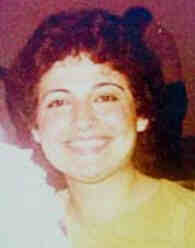 |
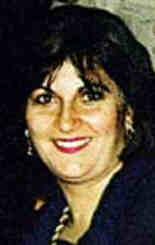 |
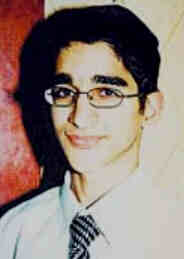 |
2001 Nidal Shadouf, 21, suicide bomber, and two Israeli soldiers:
Avi Ben-Haroush and Hanit Hason-Armi (one of them a woman), near
the Binyamina train station, Israel, at about 19:40. Four others are
wounded. Shadouf was an Islamic Jihad militant from the West Bank village
of Burkin.
1981 Jacob Wolfowitz, mathematician who worked on nonparametric statistical inference with Wald and also collaborated on sequential analysis. 1953 Hilaire Pierre Belloc, escritor británico. 1949 Arthur Wardle, British artist born on 05 February 1864. — MORE ON WARDLE AT ART “4” JULY — LINKS — A Comforting Friend — A Bacchante — The Lure of the North 1924 Marius Borgeaud, Swiss artist born on 21 September 1861. |
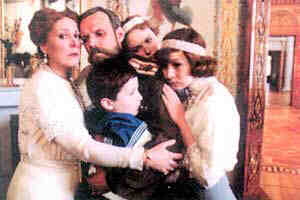 1918
Tsar Nicholas II, 49
^top^ 1918
Tsar Nicholas II, 49
^top^tsarina Alexandra Fedorovna, his wife, 45 [born Alix of Hesse 06 Jun 1872] his children: 1. Grand Duchess Olga, 22 (born Nov 1895)[03 or 16 Nov 1895] 2. Grand Duchess Tatiana, 21 (born Jun 1897)[29 May 1897] 3. Grand Duchess Marie, 19 [14 Jun 1899] 4 Grand Duchess Anastasia, 17 (born Jun 1901)[05 Jun 1901] 5. tsarevich Aleksey, 13 (born 12 Aug 1904)= their servants: Nagorny, a sailor, at the service of Alexis, 3 other servants, also Jimmy, the dog of Alexis After having been held prisoners by the Bolsheviks, they are are executed, formally ending three centuries of the Romanov dynasty. They are taken to a cellar under the pretense of having their photograph taken when Bolshevik troops storm in and shoot them to death. Born on 19 May 1868, crowned on 26 May 1894, married on 26 November 1894, Nicholas was neither trained nor inclined to rule, which did not help the autocracy he sought to preserve in an era desperate for change. The disastrous outcome of the Russo-Japanese War led to the Russian Revolution of 1905, which the czar only defused after signing a manifesto promising representative government and basic civil liberties in Russia. However, Nicholas, influenced by his wife and the monk Rasputin, soon retracted most of these concessions, and the Bolsheviks and other revolutionary groups won wide support. In 1914, Nicholas again led his country into another costly war, and discontent in Russia grew as food became scarce, soldiers became war-weary, and devastating defeats on the Eastern Front demonstrated the czar's ineffectual leadership. 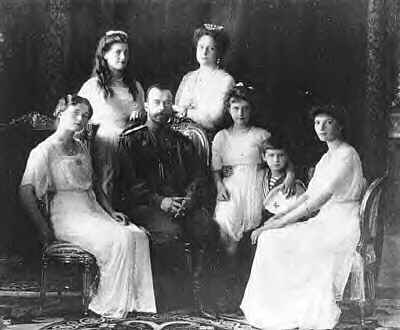 In March of 1917, the army garrison at Petrograd joined striking workers
in demanding socialist reforms, and on 15 March, Czar Nicholas II was
forced to abdicate. Nicholas and his family were first held at the Czarskoye
Selo palace, then in the Yekaterinburg palace near Tobolsk. In July of
1918, the advance of counterrevolutionary forces caused the Yekaterinburg
soviet — a local coalition of workers and soldiers — to fear
that Nicholas might be rescued. After a secret meeting, a death sentence
was passed on the tsar and his family, and on the night of 16 July Nicholas,
his wife and children, and several of their servants are shot to death.
In March of 1917, the army garrison at Petrograd joined striking workers
in demanding socialist reforms, and on 15 March, Czar Nicholas II was
forced to abdicate. Nicholas and his family were first held at the Czarskoye
Selo palace, then in the Yekaterinburg palace near Tobolsk. In July of
1918, the advance of counterrevolutionary forces caused the Yekaterinburg
soviet — a local coalition of workers and soldiers — to fear
that Nicholas might be rescued. After a secret meeting, a death sentence
was passed on the tsar and his family, and on the night of 16 July Nicholas,
his wife and children, and several of their servants are shot to death.
Assassinat du tsar et de sa famille. Le tsar Nicolas II, sa famille, et des serviteurs, sont assassinés par les révolutionnaires bolchéviks à Ekatérinenbourg. Le tsar avait succédé à son père en 1894. A la fois faible et despotique, influencé par Raspoutine, il n'avait pas su prévoir que les troubles de 1905 mènerait à la Révolution de 1917. — http://www.angelfire.com/biz5/romanovs PHOTO BELOW (taken taken in same session as the one at right): The Tsar and his family. Standing in back, from left: Marie, tsaritsa Alexandra Seated, from left: Olga, tsar Nicholas, Anastasia, Alexis, Tatiana |
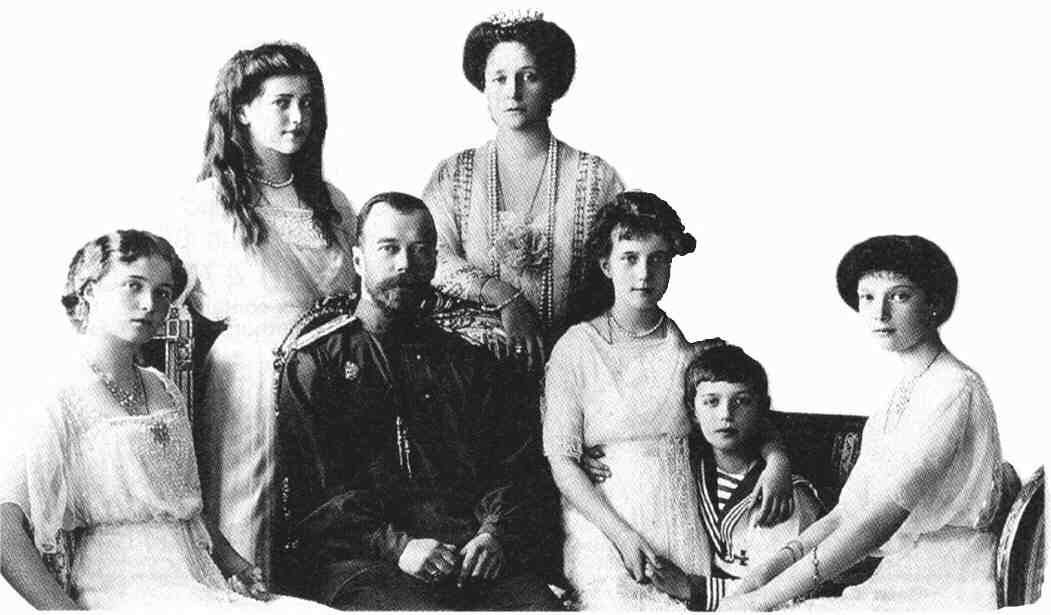 |
| 1910 Albert Anker, Swiss painter, specialized in Children,
born on 01 April 1831. — [About that painter Albert Anker: / When his wife
showed him a tanker at anchor; / He could see no reason to thank her, / And he
said: “That subject doesn't suit Anker.”] — LINKS
— The Artist's
Daughter Louise — The
Crèche — The
Little Knitters 1894 Many Negro miners in Alabama killed by striking White miners
1848 Carlos Casar de Molina, de 53 años, litógrafo y grabador español. 1833 baron Pierre-Narcisse Guérin, French Neoclassical painter born on 13 March 1774. — LINKS 1779 Hundreds of British and US soldiers, as General Anthony Wayne captures Stony Point, N.Y., with a loss to the British of more than 600 killed or captured. 1747 Giuseppe-Maria Crespi “lo Spagnolo”, Bolognese painter born on 16 March 1665. — MORE ON CRESPI AT ART “4” JULY — LINKS — Self-Portrait — Cardinal Prospero Lambertini — The Flea — Hecuba Blinding Polymnestor 1216 Inocencio III, Papa. |
| Births which occurred on
a 16 July: 1959 Ángeles Caso, escritora española.
1896 Trygve Lie 1st UN Secretary-General (1946-52) 1888 Frits Zernike invented phase-contrast microscope (Nobel 1953) 1872 Roald Amundsen Norway, explorer, discovered South Pole. 1866 Lodovico Tommasi, Italian artist who died in 1941. 1830 Charles Meer Webb, British artist who died on 9, 10, or 11 December 1895.
1796 Jean-Baptiste-Camille Corot, who would grow up to be a French Realist painter, noted primarily for his landscapes, who inspired and to some extent anticipated the landscape painting of the Impressionists. He died on 22 February 1875. — MORE ON COROT AT ART “4” JULY — LINKS — Woman with a Pearl — Les Petits Dénicheurs — Le Torrent Pierreux (Crépuscule) — Le Marais au Grand Arbre et à la Chevrière — Le Monastère Derrière les Arbres — Les Contrebandiers — Marais de Cuicy, Près Douai — Ville-D'avray - Paysanne et Son Enfant Entre Deux Arbres au Bord de l'Étang — 282 reproductions on 21 pages at Web Shots — 38 prints at FAMSF 1778 Las bodas de Camacho, el rico de Juan Meléndez Valdés, se estrena, una de las obra de mayor relieve del teatro neoclásico español.
1719 Gerrit Zegelaar, Dutch artist who died on 24 June 1794. 1678 Hermann, mathematician. 1548 La Paz, Bolivia, is founded. 1486 Andrea Lanfranchi d'Agnolo di Francesco “del Sarto”, son of a tailor, he would grow up to be a Florentine painter and draftsman whose works of exquisite composition and craftsmanship were instrumental in the development of the Florentine-Roman school in the first half of the 16th century. His most striking among other well-known works is the series of frescoes on the life of St. John the Baptist (started about 1511 and completed in 1526). He died of the plague on 28 September 1530. — Portrait of Andrea de Sarto (engraving) — MORE ON DEL SARTO AT ART “4” JULY — LINKS — Self-Portrait — The Holy Family With the Child Saint John — Beheading of St. John the Baptist and presentation of his head — Birth of the Virgin — Madonna of the Harpies _ detail — Disputation over the Trinity — Portrait of the Artist's Wife (Lucrezia di Baccio del Fede) — Madonna and Child with the Young Saint John — Madonna and Child with Sts Catherine, Elisabeth and John the Baptist — Christ the Redeemer — Stories of Joseph #1 — Stories of Joseph #2 — Lamentation over Christ — The Last Supper _ detail 1 (center) _ detail 2 (left) _ detail 3 (right) _ study — Pietà — Madonna della Scala — Portrait of a Young Man — Assumption of the Virgin — Saint John the Baptist — Madonna in Glory and Saints — Virgin with Four Saints — St. James with Two Children — Madonna del sacco — The Annunciation — Annunciation — Charity — a different Charity |